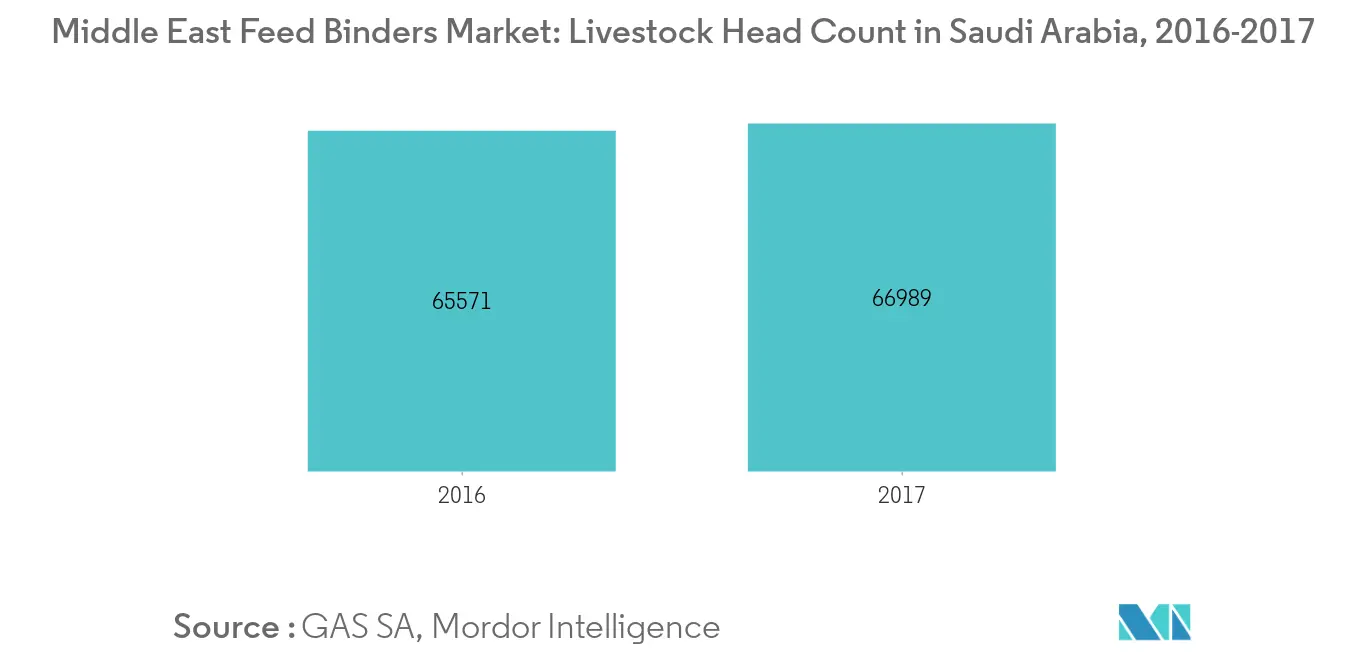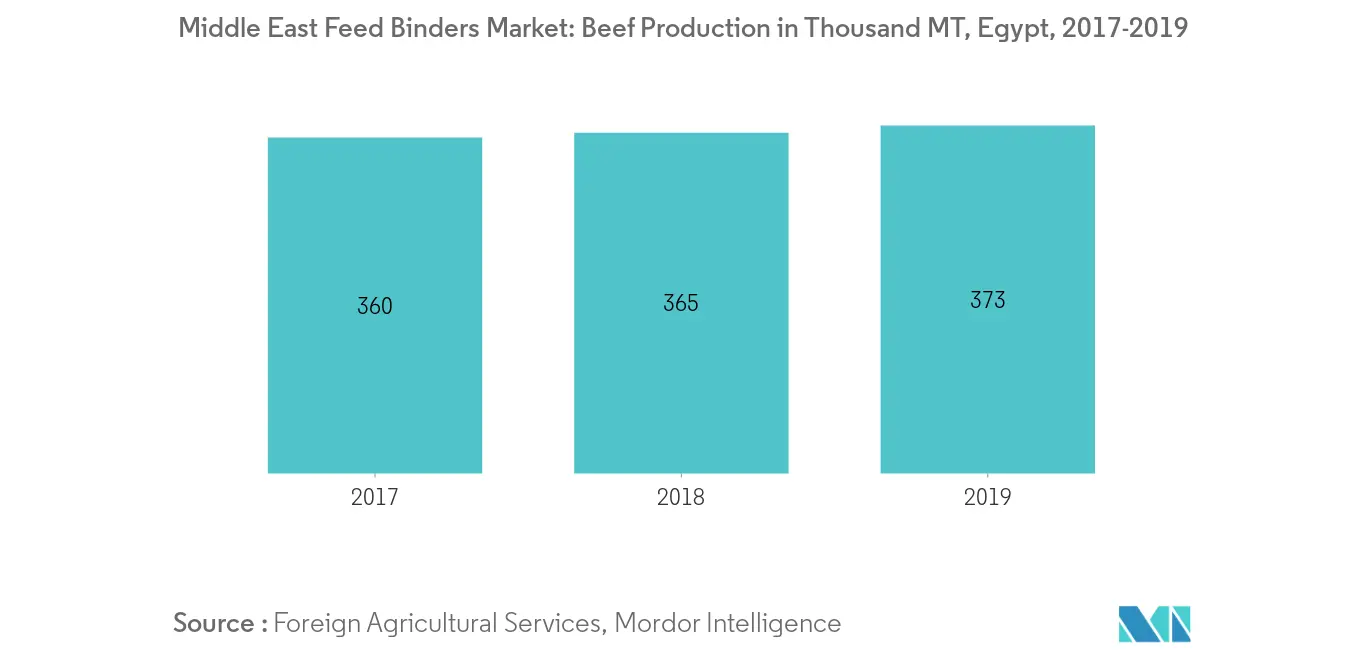Market Trends of Middle East Feed Binders Industry
This section covers the major market trends shaping the Middle East Feed Binders Market according to our research experts:
Increasing Demand for Meat and Animal Based Products
The increased demand for meat and animal-based products is also driving the market for feed additives like binders. Saudi Arabia, one of the fastest-growing high-income economies in the Middle East, has witnessed steady growth in the demand for feed additives. The growth of the feed additives market in the region is mainly driven by the increasing poultry production, rising animal health concerns, and growing industrialization of livestock. Countries, such as Tanzania, Malawi, and Ethiopia, are witnessing an increased number of training programs, in order to improve livestock productivity. Studies are being carried out in these countries, to understand the major livestock production problems, opportunities, and potential interventions, particularly in the livestock feed aspects, in order to improve the production and productivity of livestock, thereby, surging the demand for feed additives in these countries. Wheat and wheat gluten are the most efficient and cost-effective feed binding ingredients. Byproducts and distillers' grains are low in carbohydrate, which is required to properly bind pellets and are less frequently used in the industry. The several uses of binders in the compound feed raise the demand for the same in the feed industry, thereby, driving the market growth in the study period.

Egypt Dominates the Market
In Egypt, the number of modern dairy and feed farms has increased considerably. The majority of the domestic meat consumed in the country is locally produced, making Egypt an attractive market for the supply and import of feed additives. The Egyptian government is pursuing increased domestic beef production by growing the domestic heard size and increasing live cattle imports. According to the United States Department of Agriculture (USDA), Policies limiting the slaughter of cattle under 400kg and bulls less than two years of age are helping to drive domestic production. The government is also controlling some input costs for specific feed products, further incentivizing production. The rising urbanization and increasing disposable incomes have directed the Egyptians toward the food habits of the Western world. This, in turn, has led to increasing demand for meat, meat products, and processed meat, and the rising cost of feed. Farmers, facing pressure to produce quality meat without having to absorb the increasing cost of inputs, have turned toward the usage of feed additives in animal diets. Increased meat consumption and a rise in health concerns in livestock have made the market consume a higher quantity of feed binders. The techniques involved in binding the feed to make pellets increase the cost of processing, thereby restraining the growth of feed binders market. Leading companies are looking for innovations in the field by venturing into R&D for better production and management techniques.

